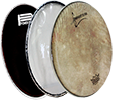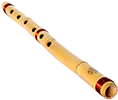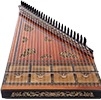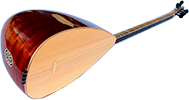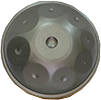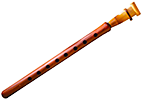Tuning the Oud
Tuning the Oud
Click Herefor the online oud tuner.
Tuning the Oud: In Pursuit of Perfection
Tuning an Oud is both challenging and rewarding. At the initial stage, it might appear a bit clumsy and technical but regular practice can help you to overcome this teething-problem with greater ease and comfort. However, tuning of an Oud should be done in tune with the style of the music that you are going to play. Better to avoid any possibility of clash between them as far as possible because it can have adverse impacts on the entire performance.
Different Tuning Methods
Different kinds of tuning methods are now being practiced for playing Oud but Arab Oud tuning and Turkish Oud tuning methods are the most popular among them. As these two tuning methods are distinctly different from one another, a player should not get confused over them. Here in this section, we will discuss some of the issues pertained to Oud tuning methods for making it easier for our readers to pinpoint their exact differences. But before you proceed further, you need to have a fair knowledge of pitch notation otherwise; you might find it extremely difficult to get things under control. Here in this article, we have used different syllables such as C, E, D etc for labeling different pitches. Besides that, we have used different numbers such as 1, 2, 3 etc as subscripts. Here, higher numbers stand for higher octaves.
Arab Oud Tuning Method
Tuning of an Oud in Arabian method has a special feature. In most of the cases, tuning starts from low notes to high notes as mentioned below: D2 G2 A2 D3 G3 C4 What is all the more interesting about Oud is that it offers a certain level of flexibility to its players. Though G2 is commonly used in the above mentioned sequence, you can try F2 as well if you are in mood of adding some variety in your performance. Some Oud players, who hail from the Iraqi school, even advocate for the use of 1st string just before the 6th string. Munir Bashir and Jamil Ghanim, great musical figures of Arab world, have experimented with a different tuning method altogether: C3 D3 G3 C4 F4 F2. However, Jamil Bashir another famed Oud player preferred D3 E3 A3 D4 G4 G2 tuning style, which is remarkably different from the previous one. Those, who are following Western sheet music for learning various aspects of Oud tuning, should be careful about octave. Remember one thing that the sound of an octave is lower in case of Oud as opposed to other popular western musical instruments. Therefore, it means that if you want to tune to C4, the notation should be displayed in the below mentioned form: 
Turkish Oud tuning Method
Turkish tuning can be of different types and the most popular among them is Bolahenk’ tuning which is widely being practiced by Oud players around the world. Its notation is described below: C 2 F 2 B2 E3 A3 D4 A common variation of this tuning is: D2 A2 B2 E3 A3 D4 . This tuning technique was practiced and perfected by a famed Oud player named: Serif Muhiddin Targan. Though Turkish Oud tuning Method is more versatile than its counterpart Arab Oud Tuning Method, its tuning style and technique is bit a complex and technical. For example, on Turkish sheet the F above middle C is similar to that of a middle C in western musical sheet. Furthermore, the sound of an octave is lower than what is displayed in a Western sheet music. If the 1st string of an Oud is tuned to D4, it will be displayed on Turkish musical sheet like this: 










